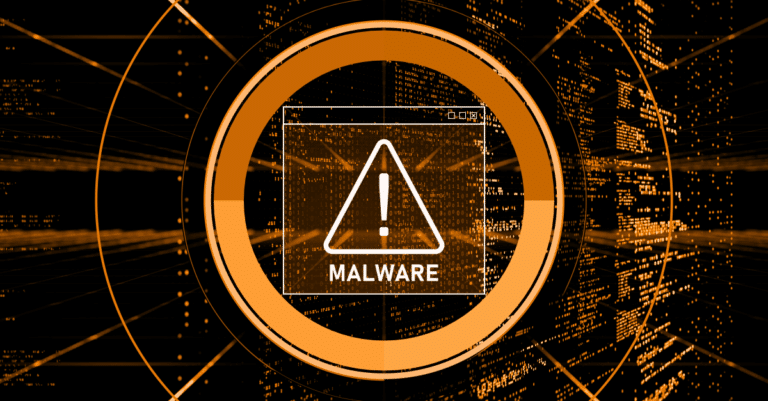Technology keeps your small business humming until it doesn’t.
Whether it’s a cyberattack, server crash, or system failure, how you respond in the first few minutes can determine whether your business bounces back or buckles under pressure.
That’s why every small business needs an IT Incident Response Plan, not just a dusty Word doc you haven’t opened since 2019. It should be a living, practical plan that gives your team confidence in the face of digital chaos.
What Is an IT Incident Response Plan?
Think of it like your small business fire drill, but for digital disasters.
An IT Incident Response Plan is more than a checklist. It’s a clear, practical framework that guides your team through the chaos of a cyber incident, from the first alert to the final review. At TechKnowledgey, we walk our clients through these four critical phases during real-world tabletop exercises.
Phase 1: Discovery and Initial Response
- How do you find out something’s wrong?
- Who’s the first person you notify?
- What steps confirm whether it’s a real threat or a false alarm?
This is where fast awareness and smart decision-making start. The quicker you identify and escalate the issue, the more damage you can prevent.
Phase 2: Containment
- How do you stop the bleeding?
- Do you disconnect systems or accounts?
- How do you communicate with your internal team or external partners?
Important note: If you plan to engage your cyber insurance provider, you must pause all action after containment. Do not begin cleanup until your insurer is notified and gives the green light. Acting too soon can void your coverage.
Phase 3: Eradication and Recovery
- How do you eliminate the threat?
- Are your backups clean and ready?
- What gets restored first to keep operations moving?
This is about safely restoring business without reinfecting systems or overlooking hidden risks.
Phase 4: Post-Incident Review
- What worked well and what didn’t?
- Do any tools, policies, or training need to change?
- How can you strengthen your response next time?
Every incident is a learning opportunity. Even a simulated one. That’s why we build continuous improvement into every plan we create.
Here’s the Truth: You Don’t Need to Panic. You Need a Plan.
Instead of rattling off fear-based stats, let’s talk about what actually works. When we help Indiana businesses build emergency response plans, we focus on three foundational truths.
1. Most incidents are preventable with basic preparation
Phishing, ransomware, and accidental deletions are common, but they don’t have to become business-ending. A few proactive steps can stop most problems before they escalate.
2. Clarity beats complexity
You don’t need a 90-page binder. You need a simple, role-based plan your team can actually use under pressure.
3. Confidence comes from practice
A plan is only as strong as your team’s ability to follow it. That’s why we recommend running short simulations every quarter to build confidence and response time.
Cyberattacks don’t just cause headaches—they can put companies out of business. More than 60 percent of small businesses that experience a cyberattack shut their doors within six months. With the right plan in place, you don’t have to be one of them.
We don’t lead with fear. We lead with structure, support, and real-world readiness.
Real Case: Pennsylvania Small Business Wipeout
In 2024, five Pennsylvania-based small businesses were hit by coordinated phishing attacks, resulting in ransomware infections that shut down operations for weeks. One family-run company in the food service industry reportedly lost over $150,000 in revenue because of downtime and ransom payments. Their backups were corrupted, and they had no incident response process in place.
You don’t want to be in their shoes. The good news? You don’t have to be.
What Goes Into a Strong Incident Plan?
Building a rock-solid IT Incident Response Plan doesn’t mean hiring a full-time CISO or reinventing the wheel. It just means covering the core pieces that keep your business secure, responsive, and recoverable.
Let’s break it down into seven clear steps:
1. Establish a Policy
This is your top-level declaration: “When something goes wrong, we act fast.” It should define what counts as a security incident, designate authority for incident decisions and outline general goals like minimizing damage, recovering quickly, and communicating clearly.
2. Define Your Incident Response Team
Every business needs people who know what to do. Your response team should include:
- IT Lead to handle technical fixes
- Communications Lead to manage messaging
- Operations Lead to keep the business running
3. Playbooks for Common Incidents
Don’t try to figure it out in the moment. Playbooks are quick how-to’s for common emergencies like phishing, ransomware or network outages. We help create ones that match your risks so you’re not guessing when it counts.
4. Craft a Clear Communication Plan
Good communication prevents chaos. Your plan should include:
- A way to alert employees and leadership quickly
- Messaging for clients or vendors if needed
- Up-to-date contact info for legal or IT support
5. Secure Your Backups and Test Them
Backups are your Incident parachute, but only if they work. Make sure your data is backed up regularly, stored securely (ideally off-site or in the cloud), encrypted and tested often. Our clients benefit from automated backup testing, so there’s no uncertainty.
6. Run Drills and Simulations
Practice builds confidence. Tabletop exercises and threat simulations help your team understand timelines, responsibilities and pressure. Even quarterly reviews can prevent chaos later.
7. Review, Learn, and Update
Every incident, real or simulated, is a chance to improve. After each one, debrief with your team, document lessons learned and revise your plan. Continuous improvement is how good businesses get even better.
TechKnowledgey helps you make sense of the industry’s most trusted frameworks and standards – so you’re not left decoding jargon or guessing what matters. We break it down, guide your decisions and tailor the approach to fit your business.
What Happens With (or Without) a Response Plan
When a cyber incident hits, your team either knows what to do or scrambles to figure it out.
With a plan, you can detect the problem quickly, contain it within hours, and start recovery using clean backups. Your team responds with confidence because everyone knows their role. Communication is clear, coordinated, and timely, both internally and with your clients or vendors. The cost of downtime stays controlled because you’re acting fast.
Without a plan, the situation drags on. It can take days just to contain the threat. Data may be permanently lost. Your team is confused, unsure who’s responsible for what, and communication breaks down. Downtime becomes costly, and the business suffers far more than it should.
We’ve seen this firsthand with small businesses here in Indiana. Those that prepare bounce back quickly. Those that don’t often face serious setbacks that ripple through their team, their operations, and even their reputation in the local community.
The difference comes down to preparation.
✅ IT Incident Readiness Checklist
Need help putting this into action? TechKnowledgey can build your response plan for you.
Why TechKnowledgey
Most Indiana businesses that reach out to us just want straight answers and a team they can rely on. TechKnowledgey was founded by Boyd Smith with that in mind: practical help, no techy runaround. We support businesses with 10 to 200 employees and tailor every plan to fit your exact needs.
From managed detection and response to tested backups and everything in between, we’ve got your back. Let’s protect what you’ve built. Schedule a free consultation today.






